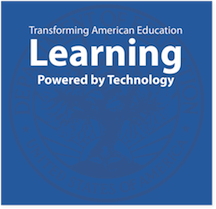It comes as something of a surprise to me that since November, 2010 there has been very little written or said about this plan. In fact, I was somewhat shocked to learn that very few people in my University Department of educational technology have even heard of the national educational technology plan. At the school level, the release of this plan by the United States Department of Education seems to have made no difference in the way in which the Hawaii Department of Education goes about the business of educational technology.
This particular document is rather a departure from traditional technology plans. It speaks very little about devices and connections rather it addresses attitudes and beliefs of schools and school leaders as they face the task of educating children to be successful in the world in which they will live and work, the world of the 21st century.
National Educational Technology Plan 2010
Published Online: November 9, 2010Includes correction(s): November 10, 2010
U.S. Releases National Ed-Tech Action Plan
By Ian Quillen
The U.S. Department of Education intends to pay for research to study online professional-collaboration communities for teachers and other educators, according to the action plan in the final version of the Obama administration’s National Education Technology Plan.
The final version of the plan, unveiled Tuesday by U.S. Secretary of Education Arne Duncan, also pledges to finance development of open-source educational resources and launch an initiative dedicated to defining and increasing educational productivity. Mr. Duncan spotlighted the plan in a speech at a conference of the State Educational Technology Directors Association, held at the National Harbor complex in Prince George’s County, Md., just outside Washington.
From the U.S. Dept. of Education… read the Executive Summary
The National Education Technology Plan, Transforming American Education: Learning Powered by Technology, calls for applying the advanced technologies used in our daily personal and professional lives to our entire education system to improve student learning, accelerate and scale up the adoption of effective practices, and use data and information for continuous improvement.
It presents five goals with recommendations for states, districts, the federal government, and other stakeholders. Each goal addresses one of the five essential components of learning powered by technology: Learning, Assessment, Teaching, Infrastructure, and Productivity.
11 November — Some further thoughts on the subject:
“There can be infinite uses of the computer and of new age technology, but if the teachers themselves are not able to bring it into the classroom and make it work, then it fails.”
Nancy Kassebaum, U.S. Senator
“Teachers need to integrate technology seamlessly into the curriculum instead of viewing it as an add-on, an afterthought, or an event.”
Heidi-Hayes Jacobs, Educational Consultant, Curriculum Designers, Inc.
For many of today’s tech-savvy students, stepping into a typical school is like taking a time machine back to the days of manual typewriters and wall-mounted dial telephones.
Hardman & Carpenter “Breathing Fire into Web 2.0″ Leading &Learning with Technology, 34 (5), 2007
Perhaps it’s not nice to compare but.…
You may read the HIDOE plan for digital technology in the Department here. Please note, it’s based on 2004 national directions. (eight years in the 21stcentury = about 50 20th century years)

No comments:
Post a Comment